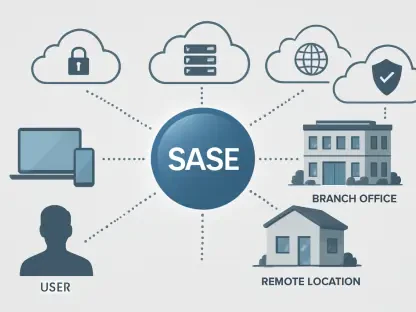As businesses in Hong Kong rapidly integrate cloud computing technologies, the need to understand and mitigate associated risks becomes increasingly paramount. While seamless connectivity and data management offer significant advantages, the landscape is fraught with complexities that necessitate strategic approaches. Companies undertaking digital transformations must navigate these challenges carefully, evaluating various service models and ensuring robust compliance with data protection laws.
Understanding Cloud Computing Models
Distinguishing IaaS, PaaS, and SaaS
Cloud computing is composed of nuanced models, each catering to distinct business needs while presenting unique challenges. Infrastructure as a Service (IaaS) serves as the foundational model by offering essential infrastructure components such as servers, storage, and network capabilities over the internet. Businesses utilizing IaaS benefit from scalability and flexibility, adjusting their infrastructure to align with changing demands. However, the responsibility for data security lies squarely on the businesses themselves, which must maintain compliance with regulations and ensure data protection when using third-party infrastructure.
Progressing beyond IaaS, Platform as a Service (PaaS) equips companies with an operating system environment to deploy and develop applications. With PaaS, businesses can focus on creating innovative applications without the burden of managing underlying infrastructure. Nevertheless, this freedom introduces concerns regarding data integrity and privacy. Companies must be diligent about protecting proprietary applications and ensuring that data handling by third-party platforms aligns with their privacy policies and compliance obligations. Clear guidelines and robust contracts are key to safeguarding data within PaaS arrangements.
The Prevalence and Implications of SaaS
As the most prominent cloud computing model, Software as a Service (SaaS) allows businesses to access software applications online. SaaS simplifies operations by eliminating the need for hardware installation and maintenance, as applications like customer management tools are instantly available from the cloud. This convenience, however, presents significant considerations around data control and security. Companies must remain vigilant about who has access to their data and how external servers handle sensitive information. Establishing comprehensive access controls and encryption measures is necessary to prevent unauthorized data exposure.
Collaboration between SaaS providers and client companies is critical in navigating the challenges posed by shared responsibility models. Clear agreements outlining data use and protection protocols ensure that both parties maintain security standards and are prepared to address potential breaches. The robust legal framework in Hong Kong further compels companies to cooperate in safeguarding data, fortifying the region’s commitment to privacy and customer trust.
Addressing Data Privacy Concerns
The Role of PCPD Guidelines
In managing cloud computing risks, data privacy emerges as a foremost concern, particularly within Hong Kong’s stringent regulatory environment. To navigate these challenges proactively, the Privacy Commissioner for Personal Data (PCPD) provides critical guidance that equips companies with the strategies needed for comprehensive data privacy management. Among the key recommendations are transparent notifications to data subjects, effectively communicating how cloud providers store and process data. Businesses are encouraged to integrate these notifications into privacy policies, ensuring full disclosure to employees and clients.
The principle of purpose limitation is another crucial component emphasized by the PCPD guidelines, affirming that cloud providers must use data solely for agreed-upon purposes. This extends to subcontractors, who should be bound by similar restrictions to prevent misuse. In crafting robust cloud contracts, companies should include explicit stipulations on purpose limitation, maintaining command over how and why data is used by third-party entities. Ensuring compliance with the PCPD’s guidance minimizes data privacy risks while also reinforcing Hong Kong’s commitment to protecting personal information.
Navigating Cross-Border Data Transfers
A focal area in managing cloud risk involves addressing the complexities of cross-border data transfers. Hong Kong’s legal framework requires careful consideration and robust measures when transferring data to jurisdictions with disparate privacy standards. Businesses often rely on data transfer agreements to mitigate risks, ensuring that their practices align with international data protection laws. By incorporating stringent contractual agreements, companies not only safeguard their data but also maintain compliance across borders, actively demonstrating adherence to Hong Kong’s legal requirements.
Cross-border transfers must be managed with precision, allowing time for establishing necessary agreements that govern data movement. Businesses should maintain and regularly review data inventories to track how information is being transferred and evaluate whether additional controls or cybersecurity measures are warranted. By placing an emphasis on maintaining the integrity and security of data during transfers, companies uphold the stringent privacy standards expected in Hong Kong, fostering trust and confidence in their operations.
Ensuring Technical Safety and Compliance
Importance of Security and Disposal Protocols
A comprehensive risk management plan is incomplete without a thorough assessment of technical safety measures. When engaging cloud services, businesses must ensure the robustness of both physical and network security, scrutinizing the security practices upheld by providers. Certifications issued by recognized bodies, such as ISO standards, indicate that providers meet high levels of data protection, giving businesses confidence in the security of their stored data. Regular audits and assessments further bolster this confidence, identifying potential vulnerabilities before they escalate into substantial risks.
Managing data disposal effectively is equally vital in mitigating long-term risks associated with cloud computing. Companies must develop and implement robust data disposal guidelines that compel cloud providers to securely erase or return data upon request. These protocols not only prevent future misuse of residual data but also comply with mandated regulations concerning data management. Tailored contracts should specify clear procedures and timelines for data disposal, ensuring that all parties adhere to industry best practices and legal requirements.
Understanding Subcontracting Practices
Understanding the intricacies of subcontracting arrangements is essential in fortifying data security. Cloud service providers often rely on subcontractors, necessitating transparency and due diligence to ensure compliance with data protection standards. Businesses must evaluate providers’ subcontracting strategies meticulously and demand assurances of equivalent data protection measures throughout the subcontracting chain. Enforcing accountability among subcontractors is non-negotiable, as it promotes seamless risk mitigation across all service layers.
To enhance oversight, businesses should seek regular updates from cloud providers on subcontractor engagements and insist on independent audits when possible. Insisting on comprehensive contractual provisions addressing subcontracting practices ensures alignment with established data protection policies and simplifies the process of identifying potential security gaps. This proactive approach to subcontractor management reassures businesses of their position within the cloud ecosystem while allowing them to benefit from cutting-edge technological advancements.
Building Resilience through Contracts and Audits
Contractual Strategies and Audit Rights
Clear and comprehensive contracts serve as the backbone of successful cloud computing partnerships. For businesses, negotiating terms with cloud providers often poses challenges, especially when dealing with standardized services that limit contract flexibility. Therefore, it becomes imperative to scrutinize proposed contract terms thoroughly, addressing any gaps in terms of security and privacy protection. Businesses must advocate for customized contract clauses, involving legal experts where necessary to guide negotiations and secure terms that align with both operational goals and regulatory requirements.
Similarly, businesses should exercise their auditing rights as a means of verifying that providers adhere to security protocols. Conducting regular audits offers valuable insights into cloud providers’ practices, granting businesses the confidence that their data remains safe and protected. While these audits require time and resources, they are integral to maintaining transparency and fostering constructive relationships. Preparing for these audits involves compiling necessary documentation and clearly understanding expectations for compliance, thereby promoting the continued success of cloud implementations.
Overcoming Standardization Challenges
As businesses in Hong Kong increasingly adopt cloud computing technologies, it becomes essential to understand and address the accompanying risks. Cloud computing offers tremendous benefits, such as improved connectivity and efficient data management. However, these benefits are not without complications, requiring companies to adopt strategic approaches to tackle them. Businesses undergoing digital transitions must navigate this intricate landscape with care, diligently assessing different service models to better position themselves in this evolving environment. It’s vital for companies to ensure strong compliance with data protection laws, especially given the regulatory landscape in Hong Kong. Data privacy is an increasingly prominent concern, and businesses must prioritize safeguarding sensitive information while maintaining operational efficiency. As digital change becomes more widespread, firms need proactive strategies to foresee and mitigate potential risks, all while capitalizing on new opportunities. In this rapidly evolving digital age, striking a balance between innovation and security is crucial for sustainable growth.









